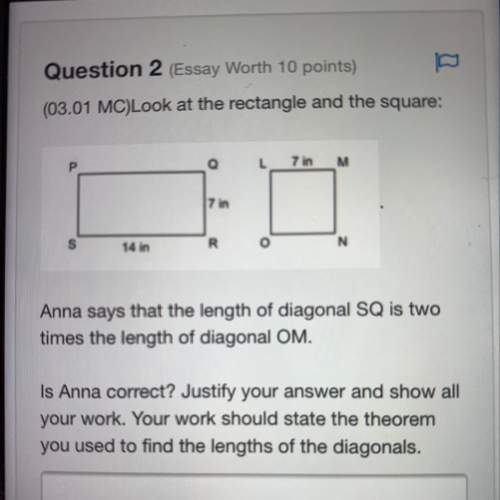
Mathematics, 21.09.2021 08:20, Izzyfizzy1
A 90° counterclockwise rotation about the origin, and then a reflection across the x-axis performed on shape I
proves that shape II is congruent to shape I. Which other sequences of transformations on shape I can also be
used to prove congruence to shape II?
a reflection across the y-axis and a 90° clockwise rotation about the origin
a 90° counterclockwise rotation about the origin and a reflection across the y-axis
a reflection across the y-axis and a 90° counterclockwise rotation about the origin
a 90° clockwise rotation about the origin and a reflection across the x-axis
a reflection across the x-axis and a 90° clockwise rotation about the origin
Reset Next

Answers: 1
Other questions on the subject: Mathematics

Mathematics, 21.06.2019 21:30, randallcraig27
Two rectangular prisms have the same volume. the area of the base of the blue prism is 418 4 1 8 square units. the area of the base of the red prism is one-half that of the blue prism. which statement is true?
Answers: 3


Mathematics, 21.06.2019 23:00, alyonaprotopopova
What ia the sum if the first 7 terms of the geometric series
Answers: 2

Mathematics, 21.06.2019 23:00, jetblackcap
Perry observes the opposite parallel walls of a room in how many lines do the plains containing the walls intersect
Answers: 1
Do you know the correct answer?
A 90° counterclockwise rotation about the origin, and then a reflection across the x-axis performed...
Questions in other subjects:

Health, 30.09.2019 19:50

History, 30.09.2019 19:50

Mathematics, 30.09.2019 19:50







History, 30.09.2019 19:50







